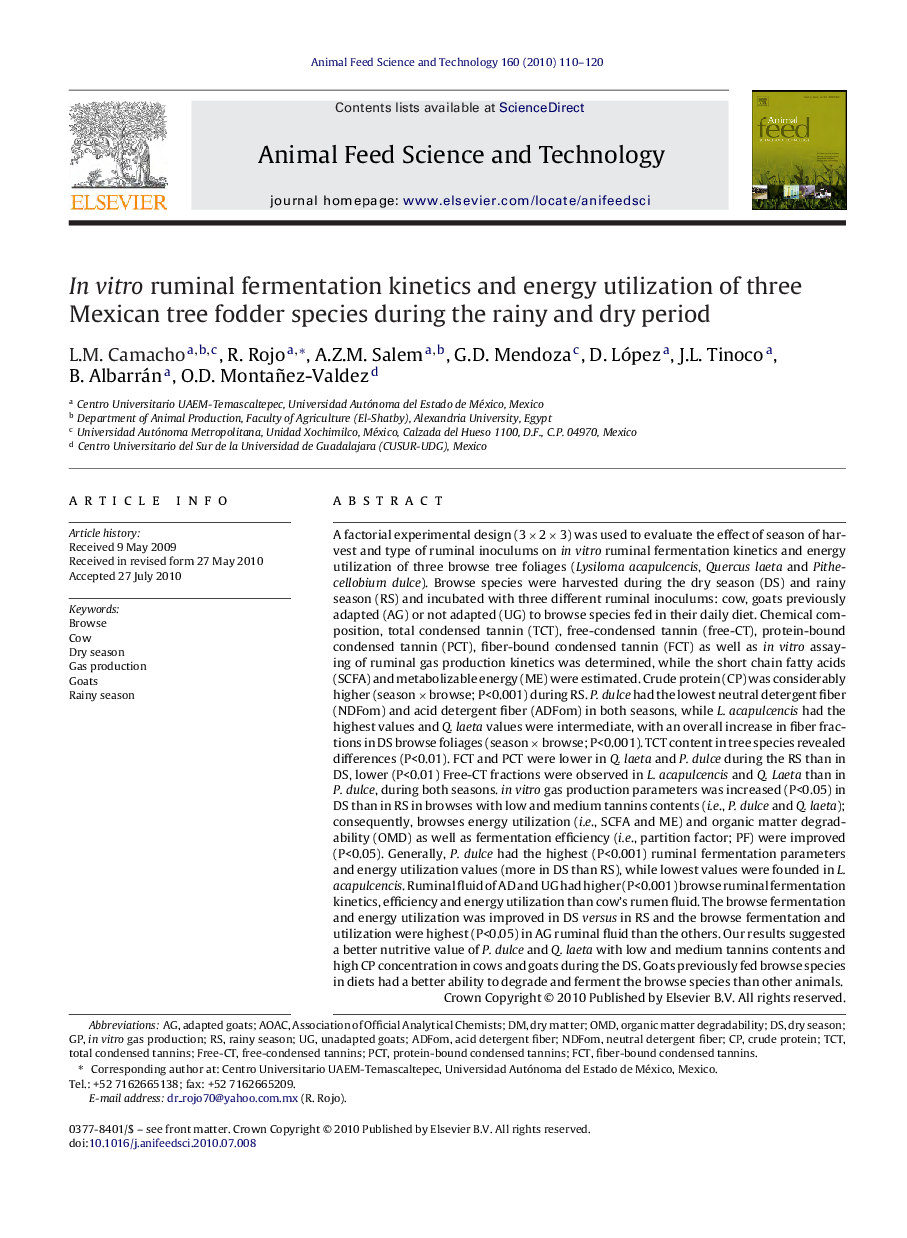| Article ID | Journal | Published Year | Pages | File Type |
|---|---|---|---|---|
| 2420093 | Animal Feed Science and Technology | 2010 | 11 Pages |
A factorial experimental design (3 × 2 × 3) was used to evaluate the effect of season of harvest and type of ruminal inoculums on in vitro ruminal fermentation kinetics and energy utilization of three browse tree foliages (Lysiloma acapulcencis, Quercus laeta and Pithecellobium dulce). Browse species were harvested during the dry season (DS) and rainy season (RS) and incubated with three different ruminal inoculums: cow, goats previously adapted (AG) or not adapted (UG) to browse species fed in their daily diet. Chemical composition, total condensed tannin (TCT), free-condensed tannin (free-CT), protein-bound condensed tannin (PCT), fiber-bound condensed tannin (FCT) as well as in vitro assaying of ruminal gas production kinetics was determined, while the short chain fatty acids (SCFA) and metabolizable energy (ME) were estimated. Crude protein (CP) was considerably higher (season × browse; P<0.001) during RS. P. dulce had the lowest neutral detergent fiber (NDFom) and acid detergent fiber (ADFom) in both seasons, while L. acapulcencis had the highest values and Q. laeta values were intermediate, with an overall increase in fiber fractions in DS browse foliages (season × browse; P<0.001). TCT content in tree species revealed differences (P<0.01). FCT and PCT were lower in Q. laeta and P. dulce during the RS than in DS, lower (P<0.01) Free-CT fractions were observed in L. acapulcencis and Q. Laeta than in P. dulce, during both seasons. in vitro gas production parameters was increased (P<0.05) in DS than in RS in browses with low and medium tannins contents (i.e., P. dulce and Q. laeta); consequently, browses energy utilization (i.e., SCFA and ME) and organic matter degradability (OMD) as well as fermentation efficiency (i.e., partition factor; PF) were improved (P<0.05). Generally, P. dulce had the highest (P<0.001) ruminal fermentation parameters and energy utilization values (more in DS than RS), while lowest values were founded in L. acapulcencis. Ruminal fluid of AD and UG had higher (P<0.001) browse ruminal fermentation kinetics, efficiency and energy utilization than cow's rumen fluid. The browse fermentation and energy utilization was improved in DS versus in RS and the browse fermentation and utilization were highest (P<0.05) in AG ruminal fluid than the others. Our results suggested a better nutritive value of P. dulce and Q. laeta with low and medium tannins contents and high CP concentration in cows and goats during the DS. Goats previously fed browse species in diets had a better ability to degrade and ferment the browse species than other animals.
